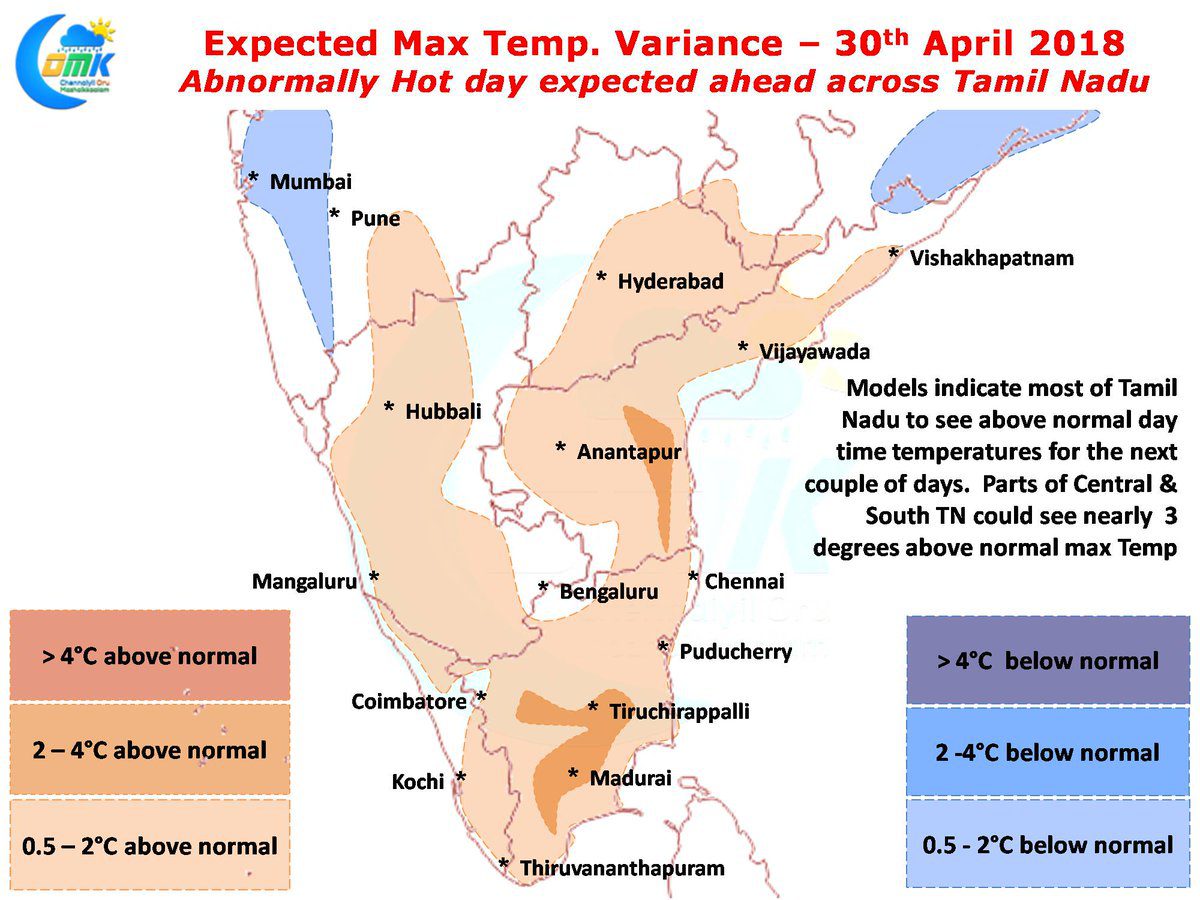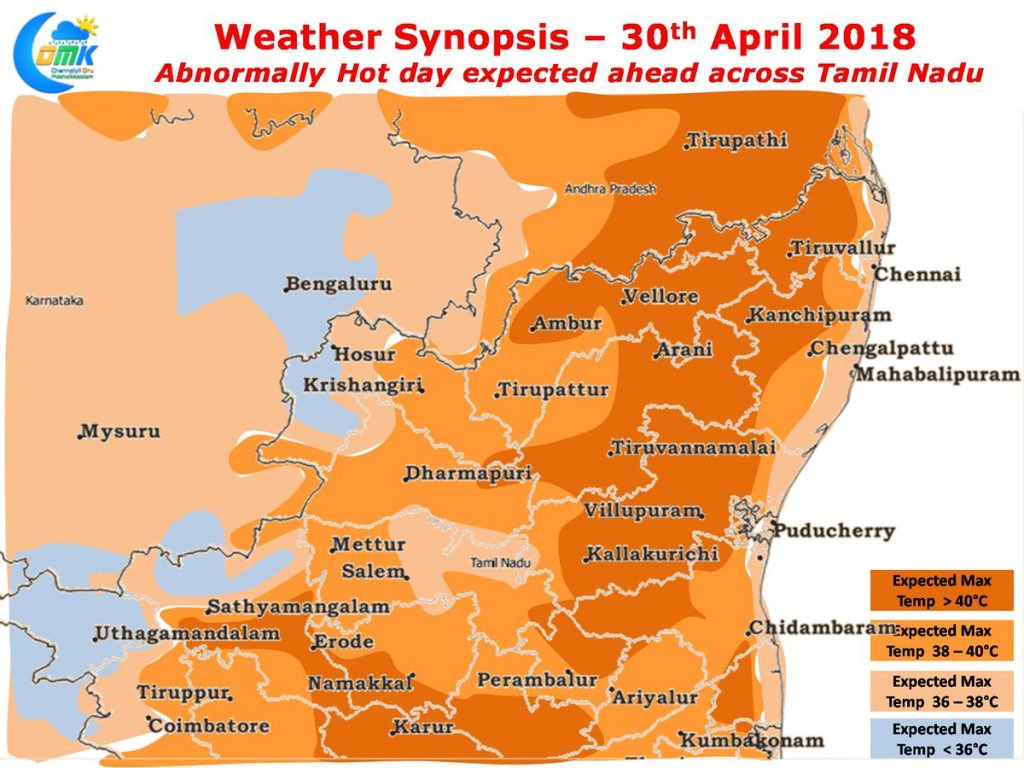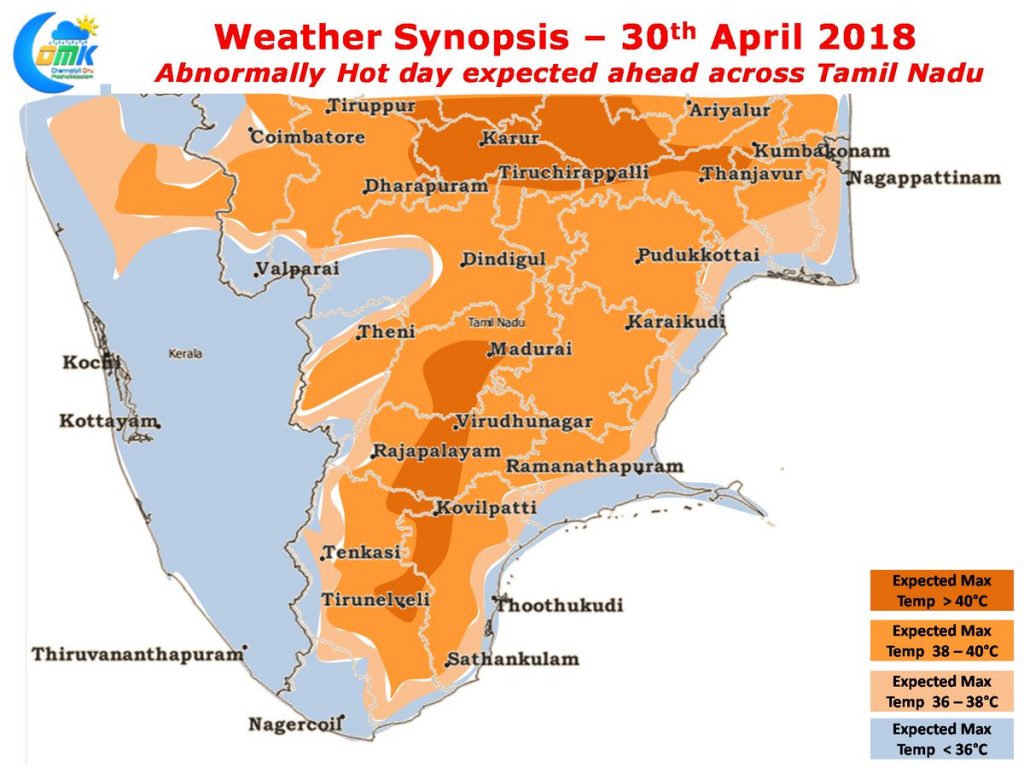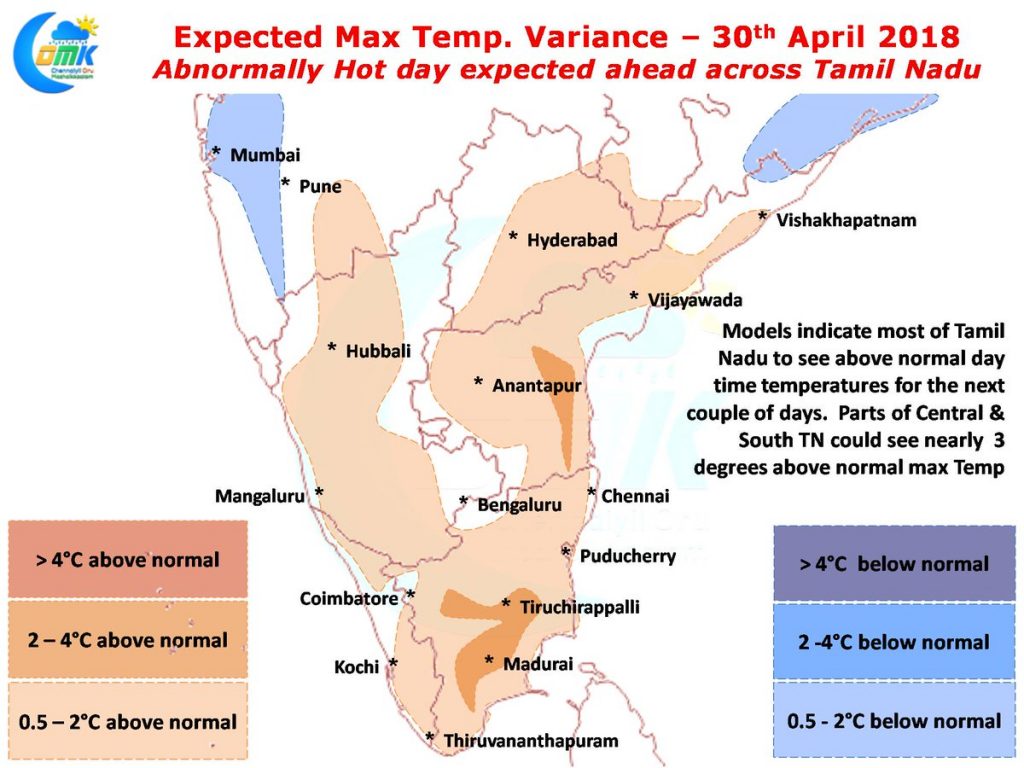As April gives way to May Tamil Nadu is getting into its hottest season of the year. The traditional Kathiri Veyyil period or Agninakshathiram is expected to begin from 4th May 2018 and run until 28th May 2018. With the Sun’s angle continuing its transit over Northern Hemisphere the stage is all set for “Hot Hotter & Hottest” Season.
As mentioned in our post yesterday for the next couple of days pseudo Westerlies is going to take center stage during the early part of the day. For the past few days under the influence of Easterlies some bit of early morning cloudiness also kept a check on the temperatures. With Easterlies weakening more clearer skies will be the order of the day providing right conditions for temperatures to peak.
Numerical Models indicate most parts of Tamil Nadu to see maximum temperatures above the 100°F mark. In the Northern districts large parts of Vellore, Tiruvannamalai, Tiruvallur, Kanchipuram& Vellore along with interior parts of Cuddalore district are likely to see temperatures touch up to 40°C. While models indicate the Sea breeze to make an entry around mid day over the coastal areas if there is any delay we could potentially see Chennai also record its hottest day of the year. The usual suspects in the Central & Western TN region will also be seeing a fairly hot day ahead with places like Karur expected to possibly cross the 41°C mark.
It will not be a surprise if the IMD Observatory at Karur Paramathi records the first 42°C of the state within the next couple of days of the current spell. Models also indicate parts of Vridhunagar, Thoothukudi & Madurai also to see max temperatures inch closer to the 40°C mark. Overall for the next couple of days will see most of Tamil Nadu to see above normal day time temperatures with parts of Central & South Tamil Nadu seeing the maximum temperatures record nearly 3 degrees above normal for this time of the year. While certainly this spell is not going to be like heat wave conditions it is advisable to stay well hydrated and avoid outdoor travels during the afternoons to prevent long exposure to direct sun light.





